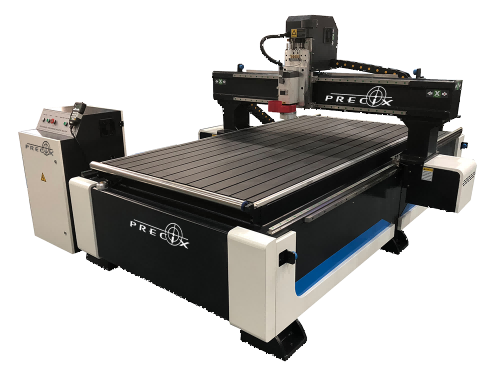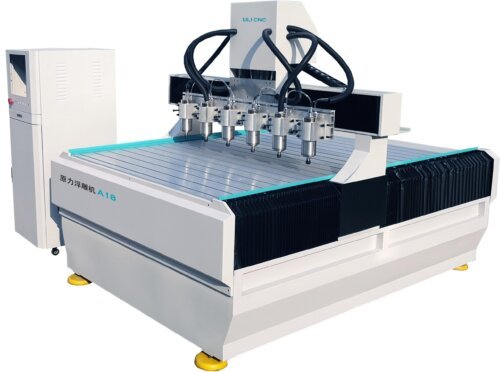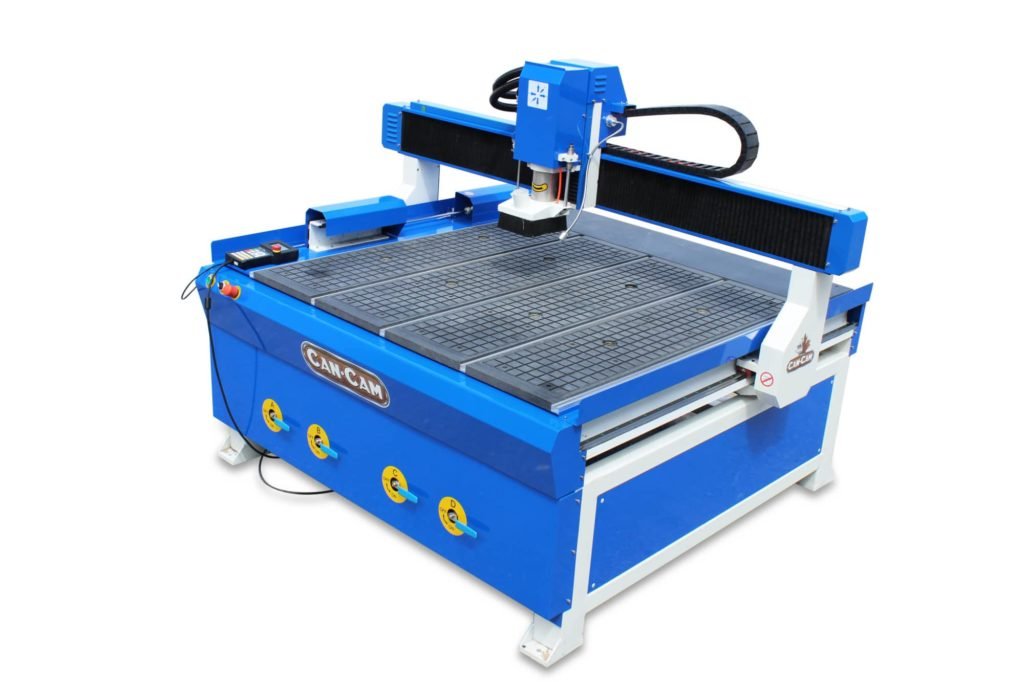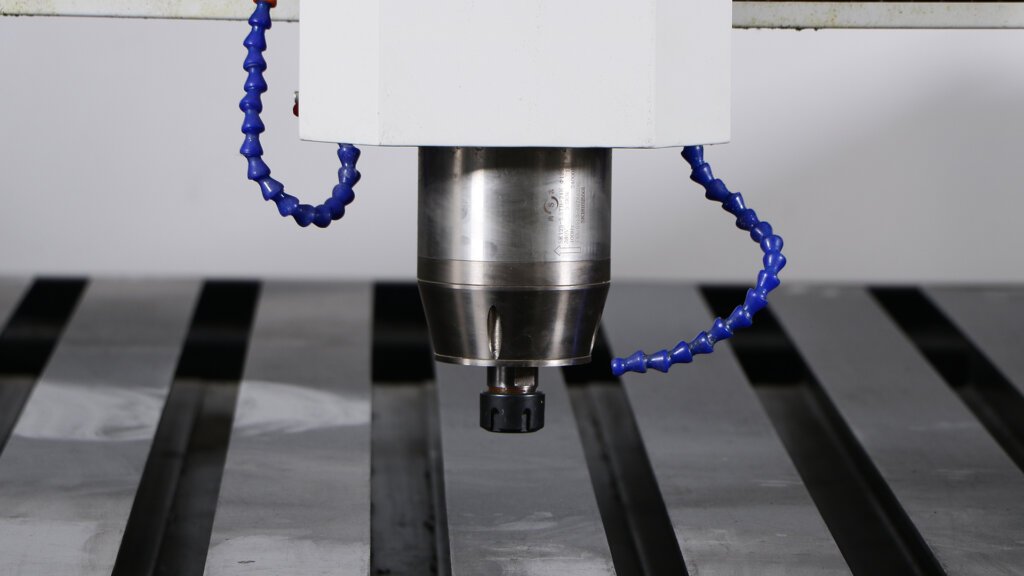Industrial CNC Routers are the backbone of modern manufacturing, enabling precise cutting, carving, and shaping of materials like wood, plastic, metal, and composites. These machines are essential in industries ranging from woodworking to aerospace, producing everything from furniture and signage to aircraft components. But what makes industrial CNC routers so powerful, and how do they work? Let’s dive into the fascinating world of CNC routing and explore its impact on modern manufacturing.
What Are Industrial CNC Routers?
An Industrial CNC Router is a computer-controlled machine that uses rotating cutting tools to remove material from a workpiece. Unlike manual routers, CNC routers are automated, allowing for precise and repeatable cuts. These machines are capable of handling a wide range of materials, including wood, plastic, metal, and composites.
Why Industrial CNC Routers Matter
- Precision: CNC routers can achieve tolerances as tight as ±0.005 inches (0.127 mm).
- Efficiency: Automated processes reduce human error and increase production speed.
- Versatility: CNC routers work with a wide range of materials and can perform complex cuts and carvings.
 How Do Industrial CNC Routers Work?
How Do Industrial CNC Routers Work?
Let’s break down the process step by step, with a focus on the technical details that make CNC routing so effective.
1. Design: The Blueprint
The process begins with a 3D model of the part, created using CAD (Computer-Aided Design) software. This digital blueprint is the foundation for everything that follows.
- Pro Tip: Use software like SolidWorks, Fusion 360, or AutoCAD to create detailed and accurate models. And don’t forget to consider manufacturability—designing for CNC routing can save you a lot of headaches down the line.
2. Material Selection: Choosing the Right Stuff
The material you choose can make or break your project. Common options include:
- Wood: Hardwood (durable and aesthetically pleasing), plywood (affordable and versatile), MDF (easy to machine).
- Plastics: Acrylic (clear and impact-resistant), polycarbonate (strong and durable), PVC (lightweight and easy to cut).
- Metals: Aluminum (lightweight and easy to machine), brass (decorative and corrosion-resistant).
- Composites: Carbon fiber (lightweight and strong), fiberglass (durable and corrosion-resistant).
- Did You Know? MDF (Medium-Density Fiberboard) is one of the most popular materials for CNC routing because it’s easy to machine and provides a smooth finish.
3. CNC Routing: The Art of Cutting
This is where the magic happens. The CNC routing process involves moving a rotating cutting tool across the workpiece to remove material. Here’s a quick rundown of the main steps:
- Setup: The workpiece is secured to the worktable using clamps or vacuum hold-downs.
- Programming: The operator inputs the G-code instructions into the control panel.
- Machining: The spindle rotates the cutting tool, and the machine moves it along the X, Y, and Z axes to create the desired shape.
- Finishing: The machine performs multiple passes to achieve the desired dimensions and surface finish.
- Fun Fact: A high-performance CNC router can achieve spindle speeds of up to 24,000 RPM, allowing for ultra-smooth finishes.
G-Code Example for CNC Routing
Here’s an example of G-code for a CNC routing operation:

4. Finishing: The Final Touch
Once the routing is done, the part may undergo additional processes to improve its appearance and functionality. This could include:
- Sanding: To smooth out rough edges.
- Polishing: To achieve a mirror-like finish.
- Painting or Coating: To protect the part from wear or enhance its appearance.
Why Are Industrial CNC Routers So Important?
1. Precision and Accuracy
Industrial CNC routers are known for their ability to achieve extremely tight tolerances. For example, in the aerospace industry, CNC routers are used to create lightweight components like aircraft panels and interior fittings that require micron-level precision. According to a 2022 report by Aerospace Manufacturing and Design, CNC routing has reduced error rates in aerospace component manufacturing by over 40%.
2. Efficiency and Speed
CNC routers can run 24/7 with minimal supervision, significantly speeding up production. A 2021 study by Modern Machine Shop found that companies using CNC routers saw a 30% increase in production efficiency compared to manual routing.
3. Cost-Effectiveness
While the initial investment in a CNC router can be high, the long-term savings are substantial. By reducing material waste and labor costs, CNC routing can lower production expenses by up to 20%, according to a 2020 analysis by Manufacturing Global.
4. Versatility
CNC routers work with a wide range of materials, making them ideal for industries like woodworking, signage, and aerospace. Whether you need a decorative wooden panel or a precision-cut metal component, CNC routing has you covered.
Real-World Applications of Industrial CNC Routers
1. Woodworking
CNC routers are used to create furniture, cabinetry, and decorative panels. For example, IKEA uses CNC routers to produce high-precision components for its furniture.
2. Signage
CNC routers are essential for creating signs and displays. A 2023 case study by Signs of the Times highlighted how a company used CNC routing to reduce the production time of custom signs by 50%.
3. Aerospace
The aerospace sector relies heavily on CNC routers to create lightweight, high-strength parts like aircraft panels and interior fittings. Boeing, for instance, uses CNC routers to manufacture components for its 787 Dreamliner.
4. Prototyping
CNC routers are widely used in prototyping to create accurate and functional models. For example, Tesla uses CNC routers to prototype new components for its electric vehicles.
Challenges and Limitations
1. High Initial Cost
CNC routers can be expensive, with prices ranging from $20,000 for basic models to over $200,000 for advanced systems. However, many companies opt for outsourcing to reduce costs.
2. Skilled Labor Required
Operating a CNC router requires specialized training. According to a 2021 article by IndustryWeek, there’s a growing skills gap in the manufacturing sector, with many companies struggling to find qualified CNC operators.
3. Material Constraints
While CNC routers can handle a wide range of materials, some (like hardened steel or titanium) require specialized tools and slower machining speeds, which can increase costs.
The Future of Industrial CNC Routers
The future of industrial CNC routers is looking bright, with several exciting trends on the horizon:
1. Automation and Robotics
The integration of CNC routers with robotic arms is revolutionizing manufacturing. For example, Fanuc has developed robotic systems that can load and unload CNC routers, further reducing labor costs and increasing efficiency.
2. AI and Machine Learning
Artificial intelligence is being used to optimize CNC routing processes. A 2023 report by TechCrunch highlighted how AI algorithms can predict tool wear and adjust machining parameters in real-time, reducing downtime and improving accuracy.
3. Additive Manufacturing (3D Printing)
While CNC routing is a subtractive process, it’s increasingly being combined with additive manufacturing. Hybrid machines that can both 3D print and CNC route are becoming more common, offering the best of both worlds.
Wrapping It Up
Industrial CNC routers are the unsung heroes of modern manufacturing, enabling the production of high-precision, complex components with unmatched efficiency. From furniture to aircraft components, these machines play a crucial role in shaping the world around us. While they come with challenges like high costs and the need for skilled labor, the benefits far outweigh the drawbacks.
If you’re considering investing in an industrial CNC router, it’s important to weigh your options carefully. Look for a machine that meets your specific needs, whether it’s a basic 3-axis router or a high-end 5-axis system. And don’t forget to factor in the cost of training your team to operate it effectively.
At the end of the day, an industrial CNC router isn’t just a tool—it’s an investment in the future of your business. So, what will you create with it?
References
- Aerospace Manufacturing and Design (2022) – Report on CNC routing in aerospace.
- Modern Machine Shop (2021) – Study on production efficiency with CNC routing.
- Manufacturing Global (2020) – Analysis of cost savings with CNC routing.
- IndustryWeek (2021) – Article on the skills gap in CNC machining.
- TechCrunch (2023) – Report on AI in CNC routing operations.







